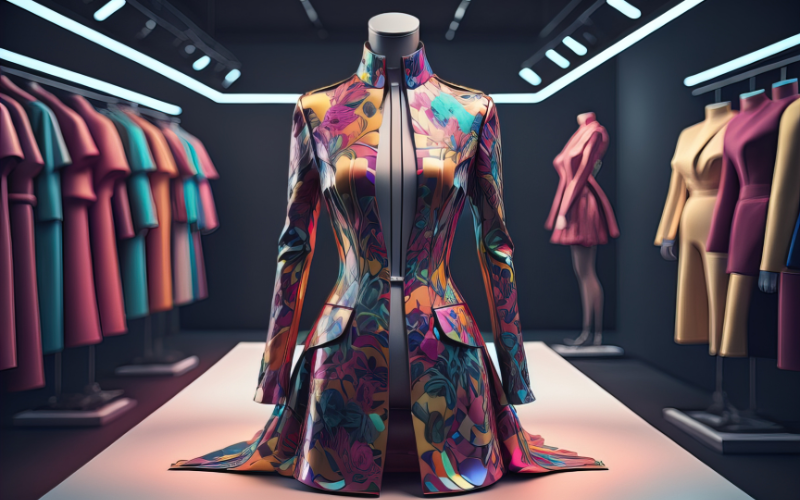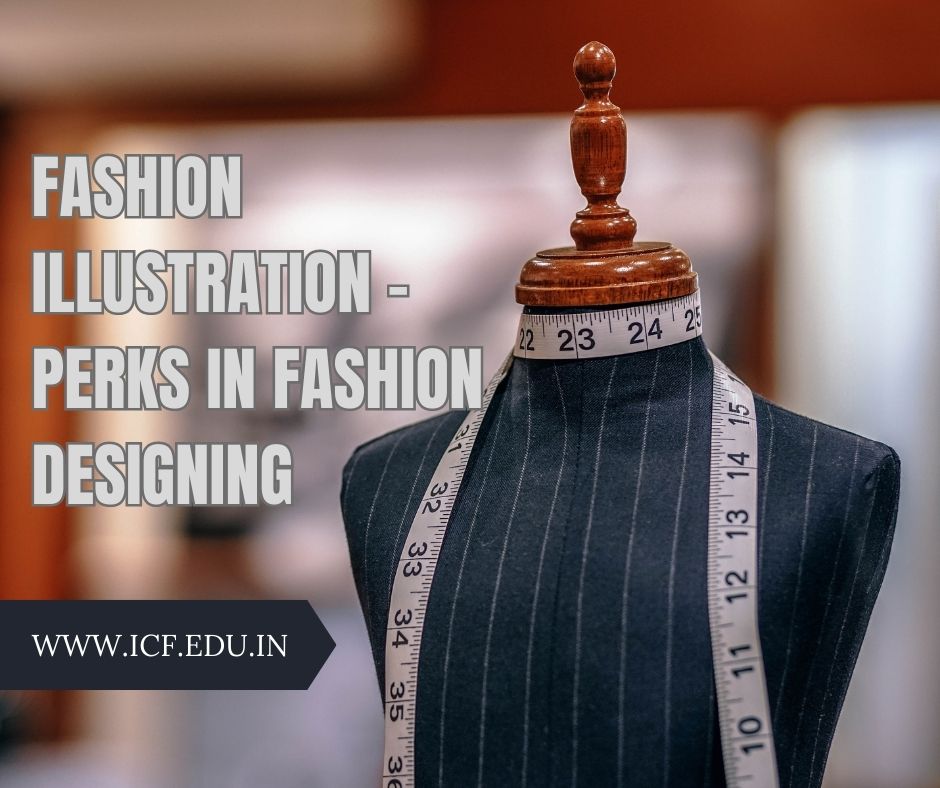Fashion designing is more than just creating clothes; it’s about expressing creativity and setting trends that define styles. Let’s explore the key roles and responsibilities of a fashion designer and understand what it takes to thrive in this dynamic field.
1. Creative Vision and Design Conceptualization
A fashion designer is a creative visionary who transforms ideas into wearable art. The design process begins with brainstorming unique concepts that reflect current trends and cater to the target audience’s needs. Designers often draw inspiration from various sources such as art, culture, history, and nature to develop original ideas. Once a concept is established, designers sketch their ideas, either by hand or using computer-aided design (CAD) software, to visualize and refine their creations. These initial sketches are crucial as they serve as the foundation for developing the final product. The ability to conceptualize and develop innovative designs that balance aesthetics and functionality is a core competency for any successful fashion designer. This creative process is not only about producing beautiful garments but also about conveying a specific message or story through the designs, making the clothes resonate with the intended audience.
2. Trend Research and Market Analysis
Staying ahead of trends is crucial for any fashion designer, as the industry is fast-paced and constantly evolving. This involves extensive market research, which includes attending fashion shows, studying fashion magazines, and observing street style to understand what is currently popular and what might be trending in the future. Designers must also analyze consumer behavior and preferences, which can be influenced by various factors, such as economic conditions, cultural shifts, and seasonal changes. Understanding these trends allows designers to anticipate what customers will want and create designs that meet these needs. Additionally, market analysis involves examining competitors’ work and identifying gaps in the market that can be filled with innovative designs. By staying attuned to the latest trends and consumer demands, fashion designers can create collections that are not only stylish but also commercially successful, ensuring they remain relevant in the competitive fashion industry.
3. Fabric and Material Selection
Choosing the right fabrics and materials is fundamental in fashion design and plays a significant role in the success of a collection. Designers must have an in-depth knowledge of different textiles, understanding their properties such as weight, texture, durability, and how they drape. This knowledge helps them select fabrics that not only enhance the aesthetic of the design but also ensure comfort and functionality for the wearer. For example, a flowing evening gown might require a lightweight silk fabric, while a structured coat might be better suited to a heavier wool. Designers must also consider the sustainability and cost of materials, as these factors can impact the overall production budget and appeal to eco-conscious consumers. Fabric selection is a critical decision that can make or break a design, as the wrong choice can lead to garments that do not meet the desired quality or performance standards. Thus, fabric and material expertise are essential for any designer aiming to create high-quality, fashionable, and functional clothing.
4. Pattern Making and Garment Construction
Pattern making is a critical step in bringing a design to life, as it involves creating the templates that serve as the blueprint for each garment. A pattern defines the shape and size of the pieces of fabric that will be sewn together to create the final product. Some designers make their own patterns, while others work closely with skilled pattern makers who translate the designer’s sketches into detailed patterns. This process requires precision and attention to detail, as even a slight error can result in a poorly fitting garment. Once the patterns are created, the garment construction process begins, where fabrics are cut, sewn, and assembled into the final product. This stage involves various techniques, such as draping, sewing, and fitting, to ensure the garment meets the designer’s vision and quality standards. The ability to oversee and participate in the patternmaking and garment construction process is crucial for a designer, as it ensures the final product aligns with their original design concept and meets the necessary fit and quality requirements.
5. Supervising Production
Once the design and patterns are ready, overseeing the production process is essential to ensure that each piece is made according to the design specifications. This involves working closely with a team of tailors, craftsmen, and production managers to coordinate the various stages of garment production, from cutting and sewing to quality control and finishing. Designers must ensure that the production process runs smoothly and efficiently, meeting deadlines and staying within budget. They are also responsible for conducting fittings and making adjustments to the garments as needed, ensuring that the final products not only look good but also fit well and are comfortable to wear. Supervising production also involves managing any issues that arise during the manufacturing process, such as fabric defects or construction errors, and finding solutions to these problems to maintain the quality and integrity of the designs. By closely monitoring the production process, designers can ensure that their vision is realized in the final product and that the garments meet the high standards expected by consumers.
6. Collection Development
Fashion designers often work on creating collections, which are groups of garments that share a common theme or aesthetic and are presented together during fashion shows or seasonal launches. Developing a cohesive collection requires creativity, planning, and an understanding of how different pieces complement each other. It’s about telling a story through fabric, color, and style, creating a visual narrative that resonates with the audience. Each collection is usually inspired by a specific theme or concept, which guides the design process and influences the choice of fabrics, colors, and silhouettes. Designers must also consider the commercial aspect of their collections, ensuring that the pieces are not only visually appealing but also wearable and marketable. This involves creating a balanced mix of garments, from statement pieces that grab attention to versatile basics that are more likely to sell. Successful collection development requires a strategic approach, combining artistic vision with practical considerations to create a lineup that is both innovative and commercially viable.
7. Brand Promotion and Marketing
In addition to design and production, fashion designers are involved in promoting their work to reach a wider audience and build a loyal customer base. This could be through various marketing channels, such as fashion shows, exhibitions, social media, and online platforms. Fashion shows are a traditional and powerful way to showcase a collection, allowing designers to present their work to buyers, press, and potential customers in a highly curated setting. Social media and online platforms have also become essential tools for fashion designers, providing a direct line of communication with consumers and allowing for real-time feedback and engagement. Effective branding and marketing strategies help designers establish their unique identity and differentiate themselves from competitors. This involves creating a consistent brand image and message that reflects the designer’s style and vision and using various promotional tactics to increase visibility and attract customers. By actively promoting their collections, designers can build brand recognition, drive sales, and establish themselves as key players in the fashion industry.
8. Adaptation and Innovation
The fashion industry is ever evolving, and staying relevant requires constant innovation and adaptation to changing trends and consumer preferences. Designers must be willing to experiment with new materials, techniques, and technologies to create fresh and exciting designs that stand out in a crowded market. This involves staying up to date with the latest developments in fashion, such as sustainable practices, technological advancements, and emerging cultural influences. Designers must also be open to feedback from consumers and ready to modify their designs based on market trends and customer preferences. This flexibility allows them to respond to shifts in the industry and maintain their relevance in a competitive market. Adaptation and innovation are not only about keeping up with trends but also about pushing the boundaries of creativity and exploring new possibilities in fashion design. By continuously learning, evolving, and experimenting, designers can stay ahead of the curve and set new trends that define the future of fashion.
9. Budget Management
Managing budgets is another crucial aspect of a fashion designer’s role, as it involves overseeing the financial aspects of the design and production process. This includes budgeting for materials, production costs, marketing, and other expenses associated with creating a fashion collection. Effective budget management ensures that designers can create high-quality collections without exceeding their budget, which is essential for maintaining profitability and sustainability in the fashion industry. Designers must carefully plan and allocate resources, considering factors such as fabric costs, labor, and marketing expenses, to ensure that each project stays within budget. They must also be prepared to make adjustments as needed, finding cost-effective solutions to any issues that arise during the production process. By managing budgets effectively, designers can maximize their resources, create beautiful and marketable collections, and achieve financial success in their careers. Budget management is a vital skill for any fashion designer, as it ensures the financial viability of their creative endeavors and helps them build a sustainable business in the competitive fashion industry.
Conclusion
Being a fashion designer is a multifaceted role that blends creativity, technical skills, and business acumen. It requires a deep understanding of the fashion industry, an ability to forecast trends, and the skill to bring innovative ideas to life. For those passionate about fashion, this career offers a dynamic and rewarding journey, filled with opportunities to influence and inspire. Fashion designing isn’t just about creating clothes; it’s about crafting experiences and defining how people express themselves through style. If you’re considering a career in fashion design, focus on building a strong foundation of skills and knowledge, and always be ready to adapt and innovate. Whether working for a renowned fashion house or as an independent designer, the roles and responsibilities of a fashion designer are essential in driving the fashion industry forward. By embracing the challenges and opportunities of this creative field, aspiring designers can make their mark and contribute to the ever-evolving world of fashion. Contact us at www.icf.edu.in to enroll in versatile fashion design courses as we have curated these courses for one and all according to their qualifications and set of skills.
Joining the International College of Fashion (ICF) offers several benefits, including industry-aligned curricula developed in partnership with IIT-Delhi, NID-Ahmadabad, and NIESBUD. ICF provides strong industry connections, internships, and hands-on learning, preparing students for the competitive fashion industry. The college focuses on developing both technical and professional skills, giving graduates a competitive edge. ICF’s collaborations with industry leaders and a network of professionals further enhance students’ career prospects.










